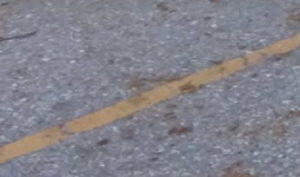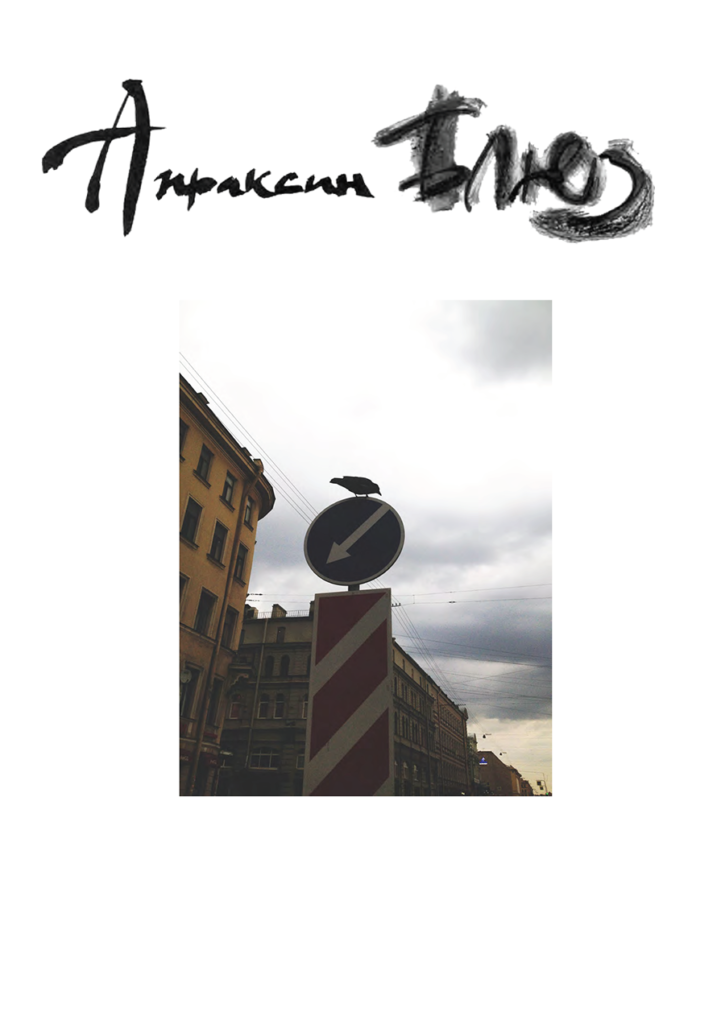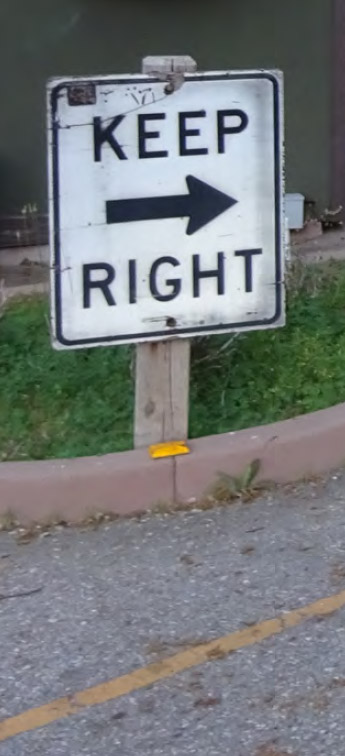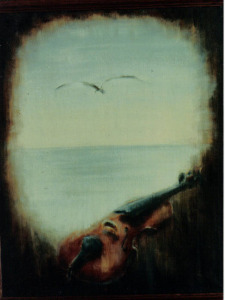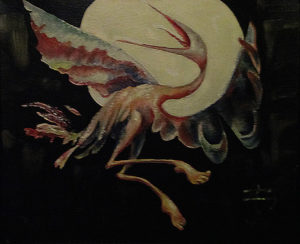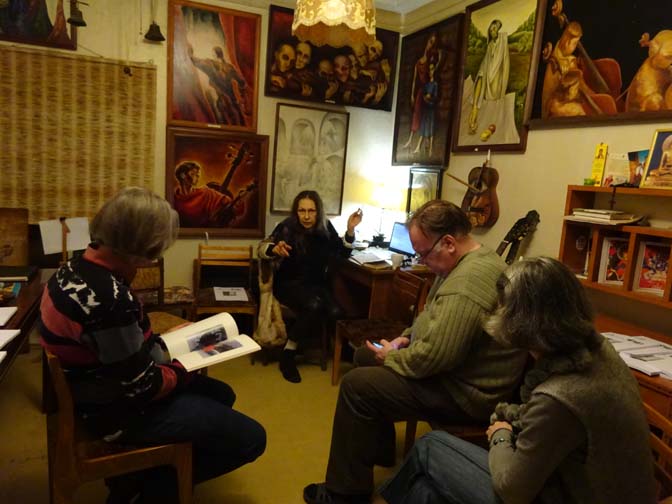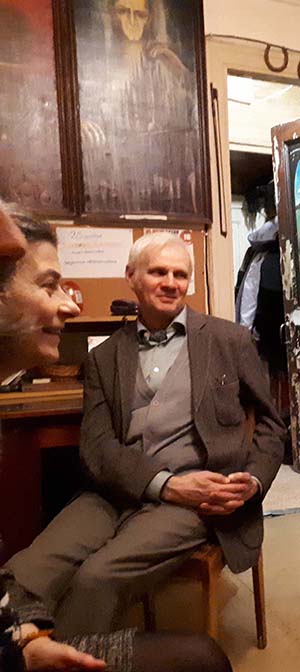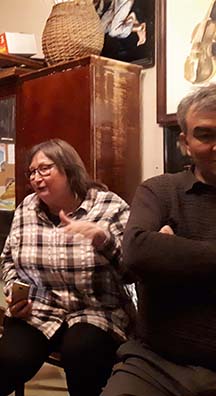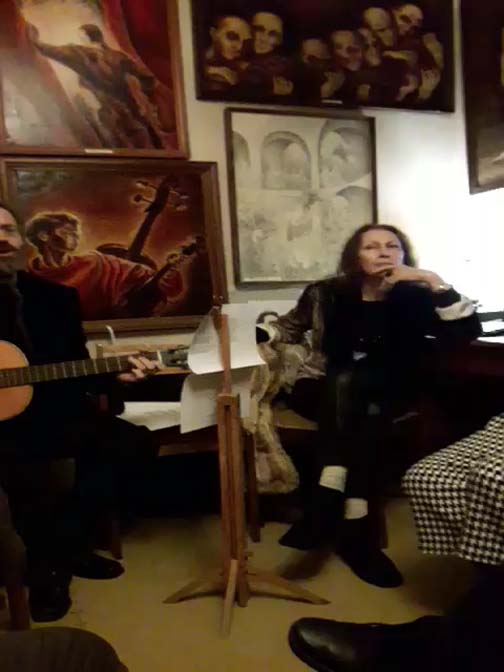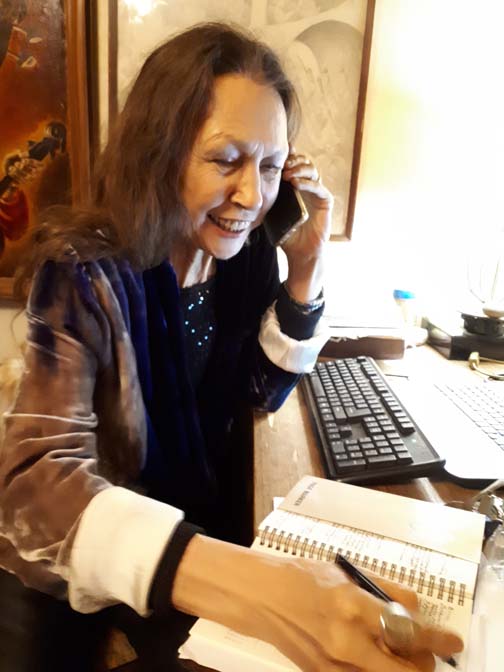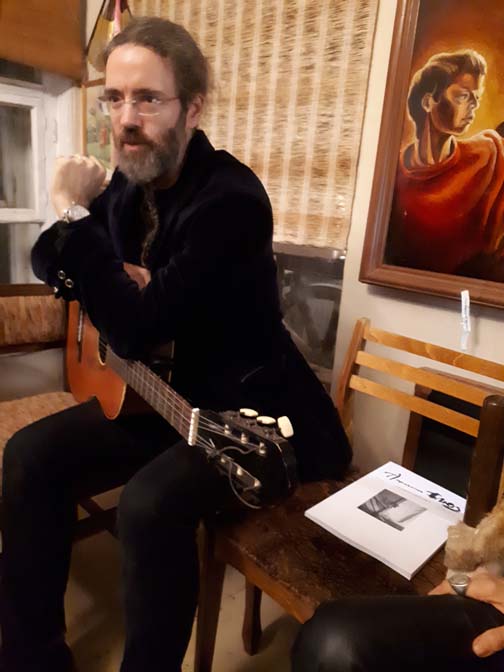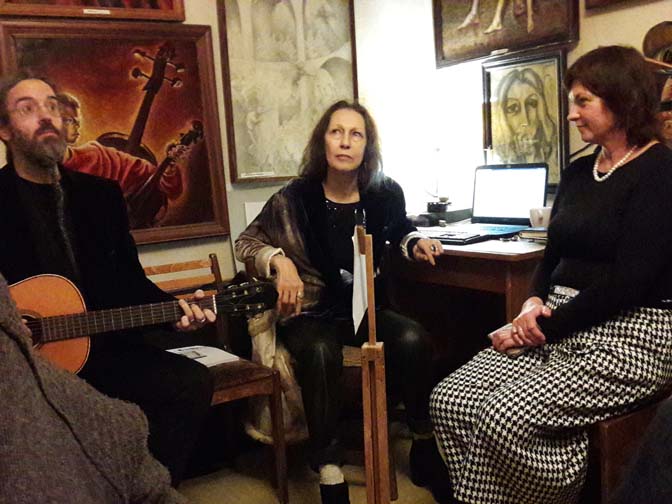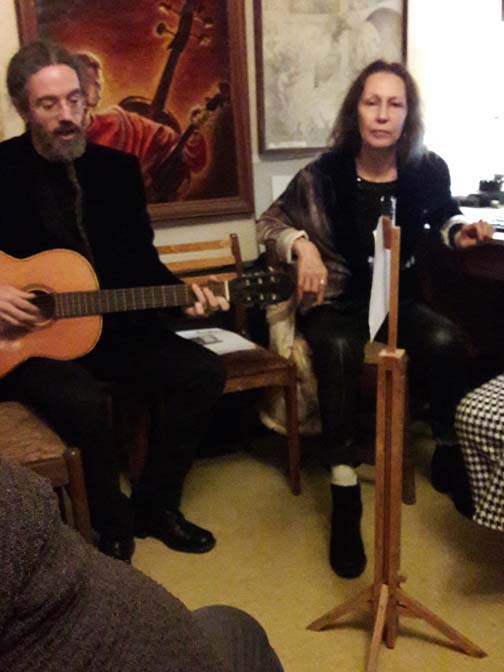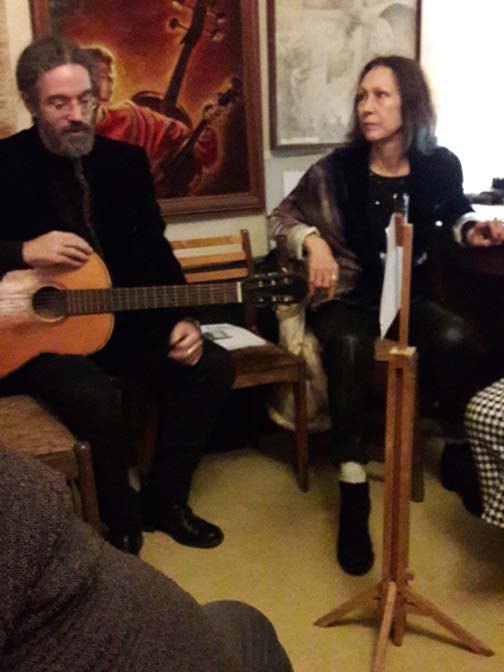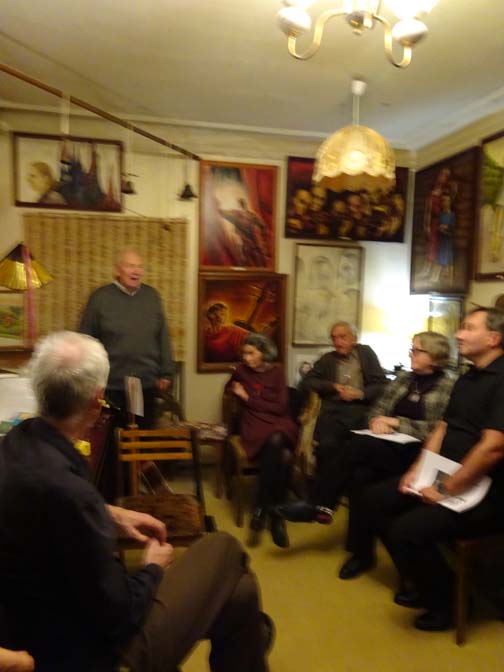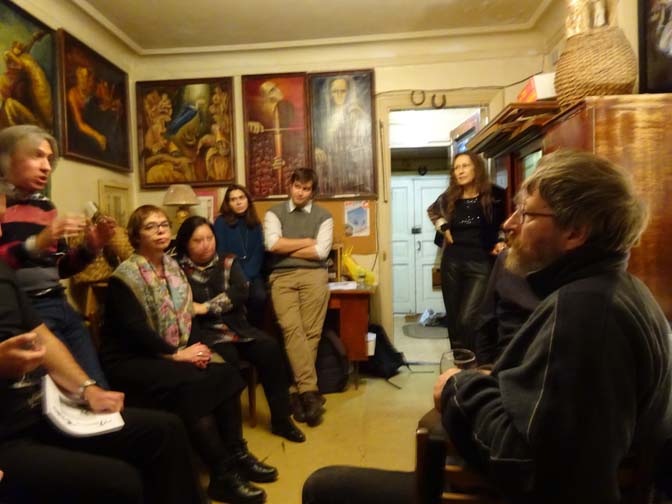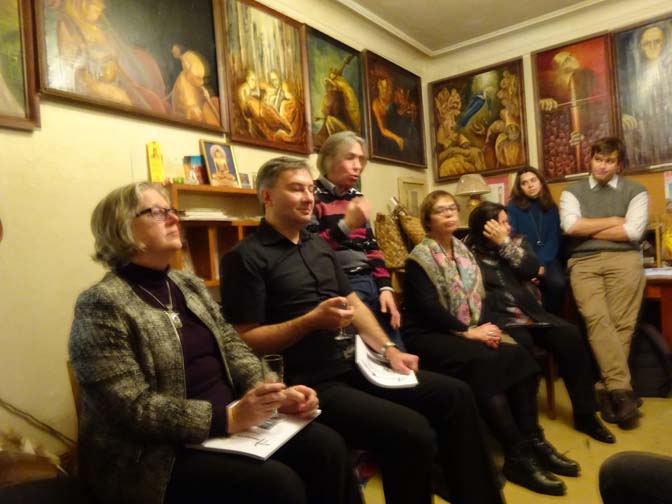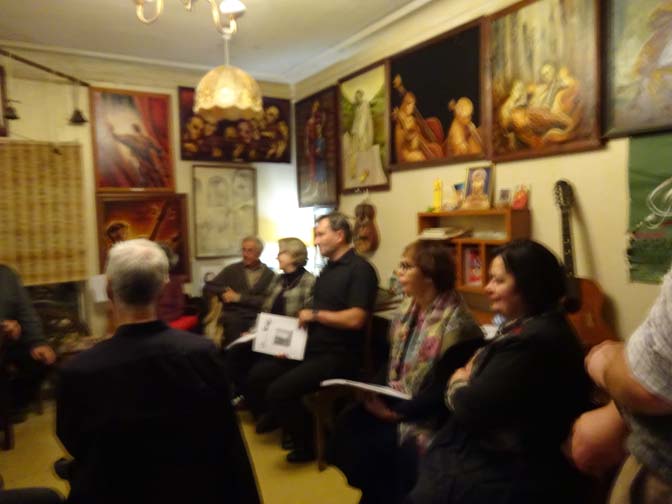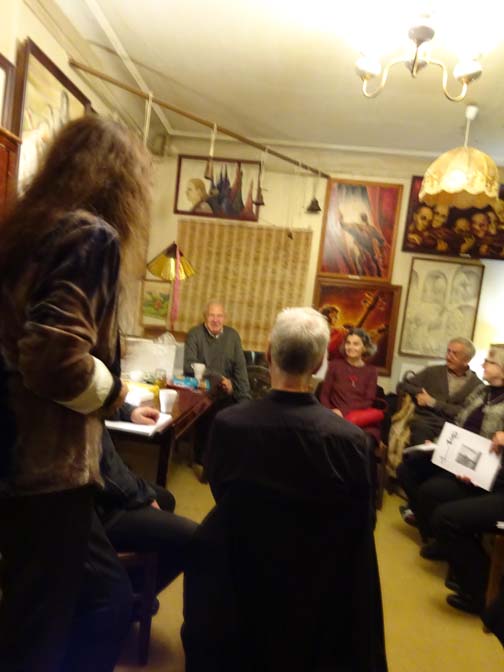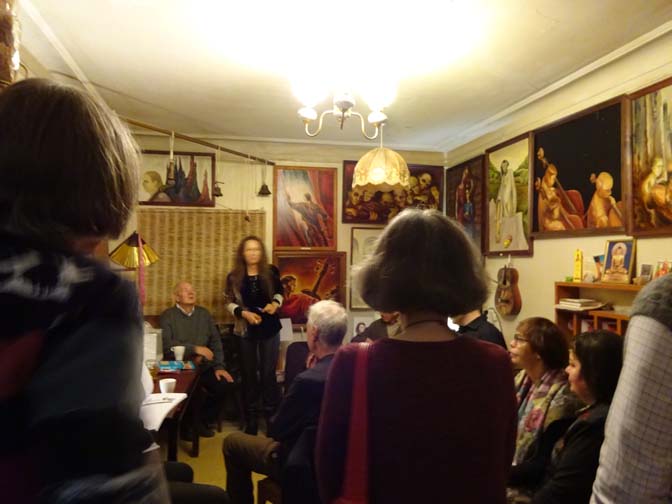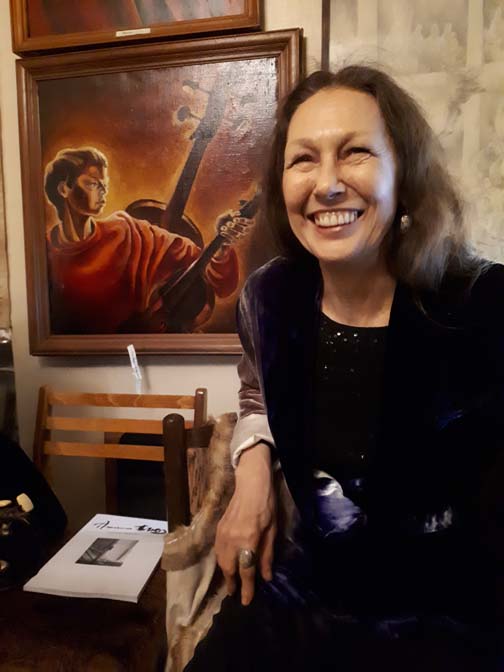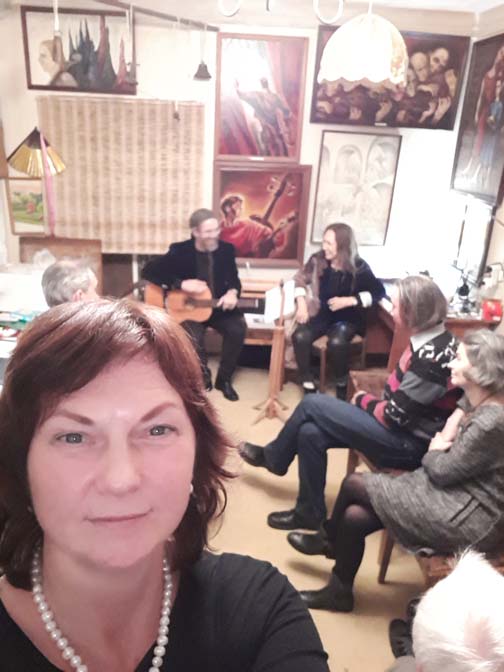Now, with the release of Apraksin Blues №30, “On the Way,” another crucial phase begins — the stage of readers’ time with the issue, authors’ mindfulness toward each other, and discussion of what it’s all about.
For the AB Translations Department, there is also the question of presenting parts of the issue in English, apart from articles with English-language sources. At least a few lines are already translated in this issue’s Quotebook. Please check back now and then for more translations!
This thirtieth issue is very strong, and a quick overview might help. Borrowing a line from the opening mondo, we might ask how each author points to possibilities of “blossoming within a way above your very doorsill”?
- For nearly thirty years, publisher and photographer Richard Whittaker has been publishing a magazine dedicated to deepening perception through heartfelt conversations on the most important things.
- Poet, prose writer, editor Irina Mashinski, currently based in America, is strengthening an intellectual space for interlingual eccentricity.
- Tamara Partanenko, a specialist in Russian and Western views about each other, makes a case for acknowledging the shortcomings of influential historian and Rusologist James Billington.
- In “Weatherburg,” musician and writer Artyom Zhilyakov builds original “blues” literature from the sovereign materials of his native Tomsk, revealing the peculiar myth-spawning underpinnings of the Siberian city.
- Kooseul Kim (Korea), Mario Luzi (Italy) and Inna Tregub (USA) find powerful bulwarks for their edifying poetry: the ethos of T.S. Eliot, the “Purgatory” of Dante, the ancient churches of Armenia, and much more.
- Poet Vladimir Verov (St. Petersburg) provides a stimulating example of creative response, offering thorough interpretation and free-spirited translation of the same stunning Dickinson poem examined by poet-naturalist Greg Darms in AB №29.
- The first presentation of a selection from the recently discovered archives of Anna Alekseeva (1899-1945), a poet unpublished in her lifetime, spans the days of her mentorship under Nikolai Gumilyov to her endurance of the siege of Leningrad.
- Recounting the courage of a leader of the Decembrist uprising, executed Sergey Muravyov-Apostol, Olga Shilova follows up on her earlier extensive study of exiled Decembrist Mikhail Lunin.
- Reaffirming AB’s long-standing ties with French culture, Patricia Walton elucidates the layers of historical conflict, beauty and ambiguity fused in the territories of today’s Louvre.
- The great Italian actress Gina Lollobrigida epitomizes beauty’s lasting forcefulness. The star, a long-time visitor to Russia, captivates hearts there to this day.
- A fresh Blues Report pays its own tribute to the pivotal role of beautiful impressions. Personal, topical thoughts on intersecting, still-unfolding alternative cultures — those of “Saigon” and “Lane” — as examples of potential lifelong ferment of intuiting truth, as reference points precluding further convergence with common places. The author views, in part, Mike and Aquarium as at once triumphant and tragic standard-bearers for a music of both these second cultures. Great news: the meanings prove translatable, extricable from the world.
Here is a song dedicated to all riders in the “blues wheelbarrow”…
WHITE WHEELBARROW (Apraksin Blues №30) – James Manteith
When Anna cedes her sheaves into the care of Shiloh’s priest,
After her best themes remove the shame of barrenness
And her commas surge inserted where she hurriedly
Omitted them some several decades past
Then Pyotr put the dots above the mighty letter yo
And steps beyond the chaos of his daily interest
So they both board the bucket of our white wheelbarrow
While their avatars go floating off to press.
When Tamara’s chosen motto stands emblazoned for tomorrow,
Not scholars but two cosmoses conflict
And the hand she gives brave Olga, trimmed to half her former girth,
Yields a critically compliant list of references.
They will wander with Kooseul along the narrowest of allies,
Expounding on the oddities of fate
Before they all board the bucket of our white wheelbarrow
Where all strangenesses evaporate.
And when Gina quips to Guido, “You and I should make a twosome,
An accountant I can trust upon my quest
To share a periodical with Mario Luzi
As another tier of Purgatory passed,”
Then Patty will come back from her long tour of the Louvre
And lend them each her most capricious hats
So they can all board the bucket of our white wheelbarrow
To roll off to an archive in the stacks.
Poor Richard’s bringing pretzel sticks, untwisted but with salt,
To rub in the intelligence of heart.
The Emperor of Tomsk suggests that meal goes well with wind,
And he blasts a gust across the astral chart.
Inna from Armenia comes trampling like time
Along the battered flagstones by the church
So they can all board the bucket of our white wheelbarrow
And no one will be left out in the lurch.
Grand Vladimir, climbing lattices of Dickinson translations,
Claims the pulpit patriotically
And Irina, an eccentric, joins united abberations,
Taking missions in the wilderness more seriously,
But when Vagid evades the chains of overcomplicated karma,
They’ll all be lifted on an ocean wave
Which will set them in the bucket of our white wheelbarrow.
Together we are on the way.
And the white wheelbarrow’s not impropriously new.
It has simply been retouched with recent paint.
The more it’s overloaded, the more wisely it may move
Through the symphonies of walls while earth grows faint,
As a sermon of selection from an infinite direction
Which lets this planet spin as it should spin
Because if we keep well-weighted in our white wheelbarrow,
The endless will be fine in the end.
© 2020 Apraksin Blues Productions. All rights reserved.
* * *
Since issue 29’s release last fall, it seems as if virtually everyone’s managed to go out of the world. At least in some way. At minimum, in that the world itself’s changing so quickly.
When AB‘s editors and friends met in St. Petersburg in November-December 2019, future continuations of physical meetings seemed much closer at hand. After all, so many difficulties are already overcome!
In spirit, there’s no separation at all. The hot issue 30’s uncompromising quality affirms this, as do the precious contributions emerging for AB‘s next release. New partnerships and initiatives provide further affirmation. Going through changes, confronting challenges, only increases our faith in our foundational perspectives, in our work.
Blues sticks around, and times of scrupulous separation can help us learn better hearing, discernment, readiness for new gatherings. Better listening, not only to each other but to the Theme and to the Path to apprehend it.
So may this time be useful for preparation, for study. The most prestigious distance learning is always open to all of us: a school of relations — international to local — based on harmonious consciousness. In all that lies ahead, our efforts will take hold.
— James Manteith

